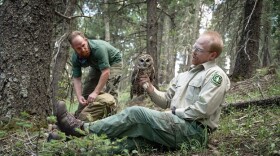Archaeological evidence shows that the Clovis people, with their iconic spear points, spread widely across much of North America near the end of the last ice age. The age of the Clovis culture has been the subject of debate, but Western scientists generally believe that it was well established by 13,000 years ago.
The origins of the Clovis people are uncertain. Western scientists once believed that they were the original migrants from Asia to the Americas, but evidence now shows that people were in the Americas thousands of years before the appearance of the Clovis culture.
Recent testing of bones and human-made objects at Texas A&M University indicates that Clovis people made their tools for only 300 years, a surprisingly brief period. Why would such a widespread and successful technology appear, spread, and then vanish so quickly?
The answer may be found in the fact that 300 years after the appearance of the Clovis culture, mammoths, mastodons, bison and other ice age megafauna all became extinct.
Multiple factors were certainly involved, but the disappearance of Clovis technology closely coincides with this extinction. Were Clovis weapons developed to hunt these huge creatures?Perhaps, with the disappearance of the megafauna, the Clovis points were no longer needed.
The Clovis people may then have adopted new technologies, more suitable to their new circumstances, and moved on.
This Earth Note was written by Steve Schwartz and produced by KNAU and the Sustainable Communities Program at Northern Arizona University.







